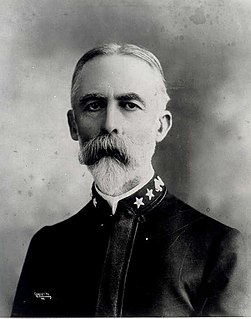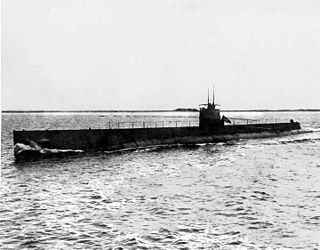Two Royal Navy ships have been called HMS Endurance after Sir Ernest Shackleton's Endurance, the ship crushed in the ice of the Weddell Sea during his 1914–1915 Antarctic expedition. The ships' motto, Fortitudine Vincimus, was Shackleton's family motto.

USS Indiana (BB-1) was the lead ship of her class and the first battleship in the United States Navy comparable to foreign battleships of the time. Authorized in 1890 and commissioned five years later, she was a small battleship, though with heavy armor and ordnance. The ship also pioneered the use of an intermediate battery. She was designed for coastal defense and as a result, her decks were not safe from high waves on the open ocean.

USS Massachusetts (BB-2) is an Indiana-class battleship and the second United States Navy ship comparable to foreign battleships of its time.
Several United States Navy ships have borne the name Florida, in honor of the state of Florida:

The Indiana-class was a class of three pre-dreadnought battleships launched in 1893. These were the first battleships built by the United States Navy comparable to contemporary European ships, such as the British HMS Hood. Authorized in 1890 and commissioned between November 1895 and April 1896, these were relatively small battleships with heavy armor and ordnance that pioneered the use of an intermediate battery. Specifically intended for coastal defense, the freeboard was insufficient to deal well with the waves of the open ocean. The turrets lacked counterweights, and the main belt armor was placed too low to be effective under most conditions.

The Battle of Santiago de Cuba was a decisive naval engagement that occurred on July 3, 1898 between an American fleet, led by William T. Sampson and Winfield Scott Schley, against a Spanish fleet led by Pascual Cervera y Topete, which occurred during the Spanish–American War. The significantly more powerful US Navy squadron, consisting of four battleships and two armored cruisers, decisively defeated an outgunned squadron of the Royal Spanish Navy, which consisted of four armored cruisers and two destroyers. All the Spanish ships were sunk, but no American ship was lost. The crushing loss sealed American victory in the Cuban theater of the war and ensuring the independence of Cuba from Spanish rule.

Winfield Scott Schley was a rear admiral in the United States Navy and the hero of the Battle of Santiago de Cuba during the Spanish–American War.

William Thomas Sampson was a United States Navy rear admiral known for his victory in the Battle of Santiago de Cuba during the Spanish–American War.

The first USS T-1 (SS-52/SF-1) was an AA-1-class submarine in the service of the United States Navy; T-1 was also known as Schley and AA-1.

The AA-1 class was a class of three experimental submarines of the United States Navy, built toward the end of World War I, between 1916 and 1919, intended to produce a high-speed fleet submarine. The design was not a success and none of the submarines saw active service. However, the lessons learned were applied to the design of the later V-boats. The class was later renamed as the T class.
Six ships and two shore establishments of the Royal Navy have been called HMS Temeraire. The name entered the navy with the capture of the first Temeraire from the French in 1759:

USS Schley (DD-103) was a Wickes-class destroyer in the United States Navy during World War I and later designated, APD-14 in World War II. She was the first ship named in honor of Winfield Scott Schley.

George Henry Ellis was a sailor in the United States Navy during the Spanish–American War. He was the only US sailor killed in action during the Battle of Santiago de Cuba.
Two ships and a shore establishment of the Royal Navy have been named HMS Ganges after the river Ganges in India.
Several ships have been named Innisfallen, the name being derived from the island of Innisfallen in County Kerry and often given to vessels serving the southerly coasts of Ireland. Five served on the Irish Sea route between Cork and Fishguard, from 1896 onwards: two of these were war casualties whilst the remainder have been either scrapped or renamed and sold to new owners.
U-1 may refer to one of the following German submarines:
RMS Empress of Canada may refer to one of the following ships of the Canadian Pacific Steamship Company:
Eight ships and a training establishment of the Royal Navy have borne the name HMS Worcester, after the English city of Worcester:
MS Scandinavia may refer to the following ships:
This page is based on this
Wikipedia article Text is available under the
CC BY-SA 4.0 license; additional terms may apply.
Images, videos and audio are available under their respective licenses.








